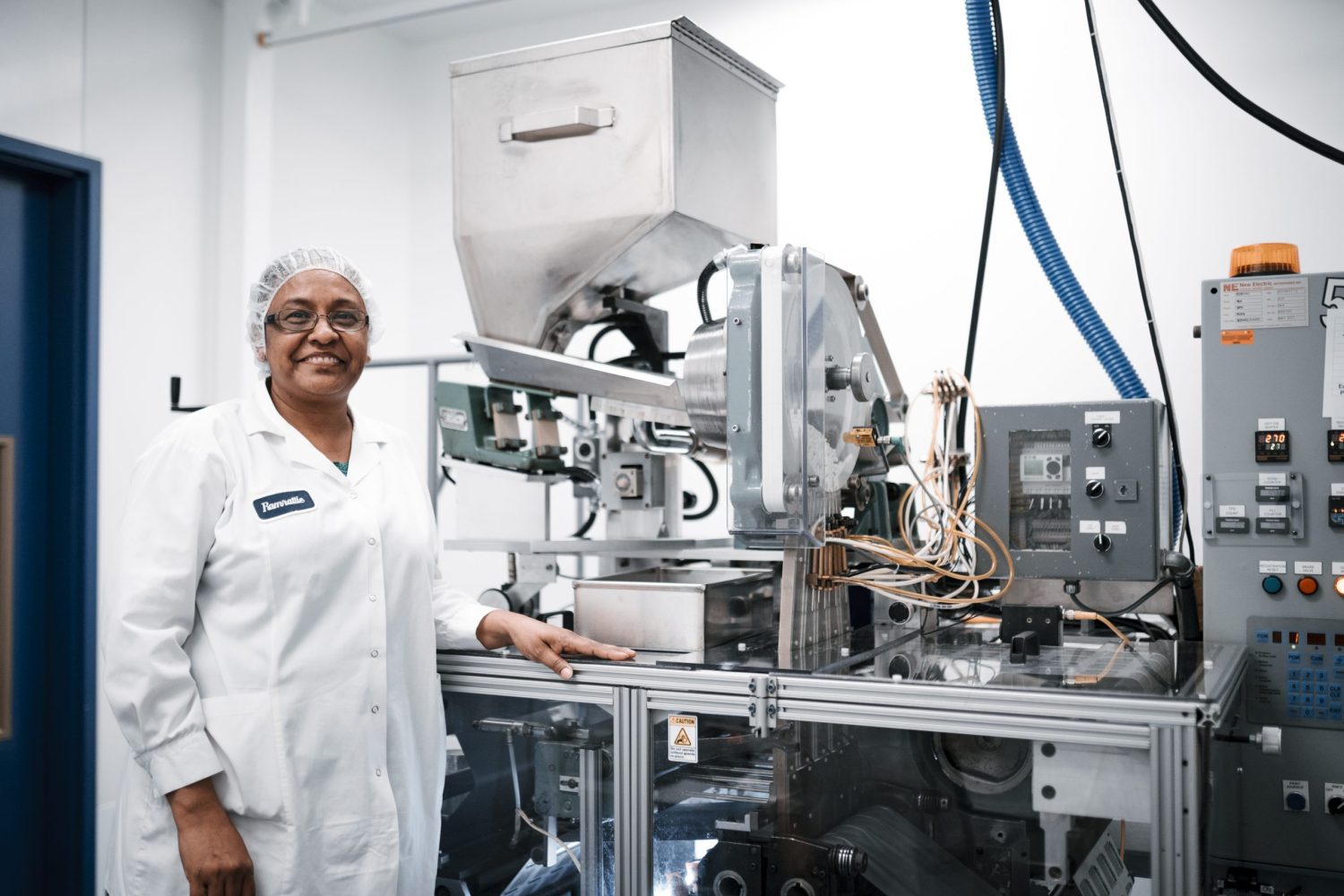How We Built A Resilient and Agile Supply Chain Through COVID-19
In the thick of COVID-19, all industries felt business disruptions, with countless customers left waiting without reliable delivery dates. Even in this post-pandemic period, product shortages continue to create purchasing issues for consumers and businesses alike.
Between trucking and personnel shortages to allocation issues and extended lead times for raw materials, the manufacturing sector was hit hard. As a regulated packaging provider, one of our biggest challenges was the limited availability of paperboard, which restricted order fulfillment for our customers. With our multiple business units and overseas operations, shipping container timelines quickly became a real challenge, as well. Containers were often stuck in ports, and at times it was near impossible to find a container to ship goods, especially from China.
With all these challenges arising, we needed to pivot quickly and build contingencies.
For us the pandemic period was a catalyst, sparking a faster rate of innovation as we navigated an unpredictable fluctuating market. Not with ease but with great effort, we launched ourselves lightyears ahead of where we were prior. By responding proactively, we built the agility and resiliency to mitigate the risk of future supply chain disruptions.
3 Ways We’ve Built Agility and Resilience in Our Supply Chain
Our supply chain team eats, sleeps, and breathes supply shortages. In a short time, they’ve improved our ability to not only respond with agility, but also see disruptions coming months before our customers do. Challenges arising from the pandemic may have inspired our progress, but our supply chain team made it happen.
How?
“Right item, right time, right quantity.”
1. Forecasting
Our team worked diligently using forecasting to understand our exact material and supply needs to optimize production. Forecasting is immensely time consuming but has unmatched benefits. As a producer you need to have the right item, at the right time, in the right quantity. You never want to have too much, but you need to have it on time – forecasting enables us to do exactly that.
We can identify issues much further out from mid- to long-range and resolve issues before they occur, part of the value Jones brings to our customers. We regularly identify problems happening two months from now, which our customers don’t see happening, to ensure we can close the gap. Following through with careful resource management, we’ve made gains by producing the right products, at the right volumes, at the right times to meet customer demand and free capacity.

Forecasting graph on screen, statistics indexing up and down.
2. Multi-sourcing Suppliers
Alongside effective forecasting, we’ve also sourced multiple supply lines. Now we can pick from different suppliers to source our materials, granting us more flexibility and sustainability as a business, resulting in higher quality products. Most importantly, as our Vice President of Supply Chain, Rick Grant puts it, “Dual sourcing leaves us with some flexibility so that when things do happen with one supplier, we can quickly bounce back to another and continue to supply our customers.”
Sourcing alternative suppliers certainly comes at an economic cost, but it’s worth it. “We prioritized getting our materials, which meant paying premiums, overtime, whatever was needed to supply our customers.” Grant explains, “We erred on the side of making sure we could support our customers versus the economics of it, and that’s part of the value Jones brings to our customers.”
3. Accountability and Communication
The ability to see ahead and optimize production, while opening multiple supply lines afforded us agility. Resilience on the other hand, we partially owe to our key suppliers ¬who stepped up to support us during hard times.
A key learning for us was leveraging open communication strategies to source materials in a timely matter. For us this meant learning about our suppliers’ limitations in their manufacturing facilities and communicating those down the value chain, including granular discussions with customers to identify overbuilds. Developing transparent supplier and customer relationships provided the accountability and support needed for sustainability through trying times.
Agility and resilience are key in a turbulent market. With these qualities in our back pocket, we show up for our customers by shipping orders on time – in other words, achieving high “fill rates.” As Grant explains, “Our team’s continued emphasis on high fill rate numbers ensures customers can depend on us to follow through. When they put an order in and we say we’re going to deliver it on this date, we’re going to do that.”
Our New Normal Post-Pandemic
Where are we now?
We may be in a post-pandemic period, but the challenges continue. Like the rest of the world, we’re still facing issues with labour shortages due to lockdowns and quarantines, without a timeframe of when or if these challenges will resolve. During the summer we experienced significant shipping delays due to labour shortages in Halifax ports. Routing and logistics with containers continue to be a big problem and forecasting offshore items shows longer recovery times.
Fortunately, being an onshore supplier, we can circumvent these disruptions with quicker response times and similarly, we’re seeing more clients switch to onshore suppliers to this advantage.
Increasingly people are asking, “How can we be quicker to respond, more efficient, and more local?” For many, the answer is onshore suppliers. Making the switch empowers a manufacturer to avoid interruptions when for example, a plant across the ocean shuts down.
And if this pandemic taught us anything, agility is key.
What will 2023 bring?
Our team anticipates a year much like 2022. Raw material capacity and the labour market should maintain at similar levels. While we may see a recession in other businesses, we’re not expecting that. With our work on forecasting we’ve seen consistent improvements throughout the year, and we anticipate that will continue.
Should 2023 play out similarly to this past year or bring new challenges, we certainly have the tools to manage it.
Our 2 key takeaways from the pandemic period
Building agility and resilience wasn’t a cakewalk. We’ve faced great challenges, but we’ve come away with great lessons. For our supply chain team, these were the most notable takeaways:
- “You must be agile. You must be able to adapt and create new processes to get through something unprecedented.” —Supply Chain Specialist, Elena Zgheir
- “You need open communication and transparency. Top-down and laterally. Exchanging feedback, experiences, and challenges and having open discussions positioned us well to bridge the gap.” —Commodity Purchasing Manager, Silvia Bettencourt
In the last year we’ve gone from a team solely executing purchase orders to a team adding value to the greater business. Through looking at forecasts and identifying trends, then implementing those key findings with the sales team – we’re making full use of our team’s skillset, and that’s our new normal.
Where We’re Headed
With the work we’ve done in long-term planning and creating agile project processes, we’re well positioned to anticipate risks. We’re aware of vulnerabilities in the supply chain so we can pivot quickly. We’ve built contingencies through secondary sourcing, forecasting and analysis, to optimize our agility and resilience.
Our work in forecasting will be foundational moving forward, navigating inventory buildups and managing supply and demand in 2023. With global market improvements and our improved capacities at Jones, we’ve come a long way.
Moving forward, our current challenge is reducing lead times.
The pandemic encouraged customers to create purchase orders further and further in advance, which drove up lead times and made it more difficult to determine who needed their products quicker.
Now that we are better equipped with existing and improved capacities, we need to communicate down the pipeline. Our customers need to know we have more stable supply lines so they don’t have to order as far in advance, and then we can pull back on our lead times.
“You always feel that you’re struggling, that you’re really trying to work your way through. And this is why we measure the KPIs. I’m motivated by the fact that I can look at the fill rate and say, you know, yeah, we think we’ve struggled, but we’re actually 10% higher than we were two years ago.” —Vice President, Supply Chain, Rick Grant

Next Steps
We’re lightyears ahead of where we were, but there is always room for improvement.
Our next step is delving even deeper into forecasting and improving our communication internally and externally to ensure visibility in the supply chain. Throughout these disruptions our key suppliers made a big difference, and we’re incredibly grateful. Moving forward we will continue building on these relationships and create more KPIs to help our vendors improve.
Our core beliefs circle around innovation and responsive nature, and we will continue to improve and build upon our existing systems to continue to deliver the best service possible in the market.
Rick Grant was recently interviewed by CTV News on this topic, read here.
